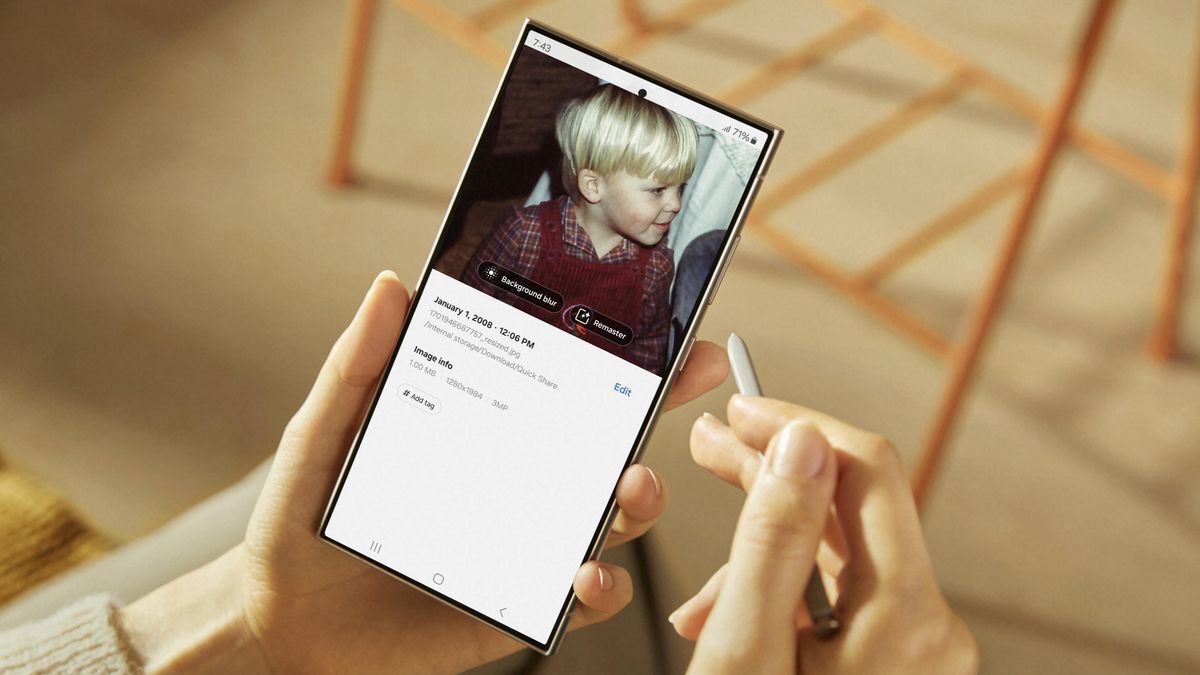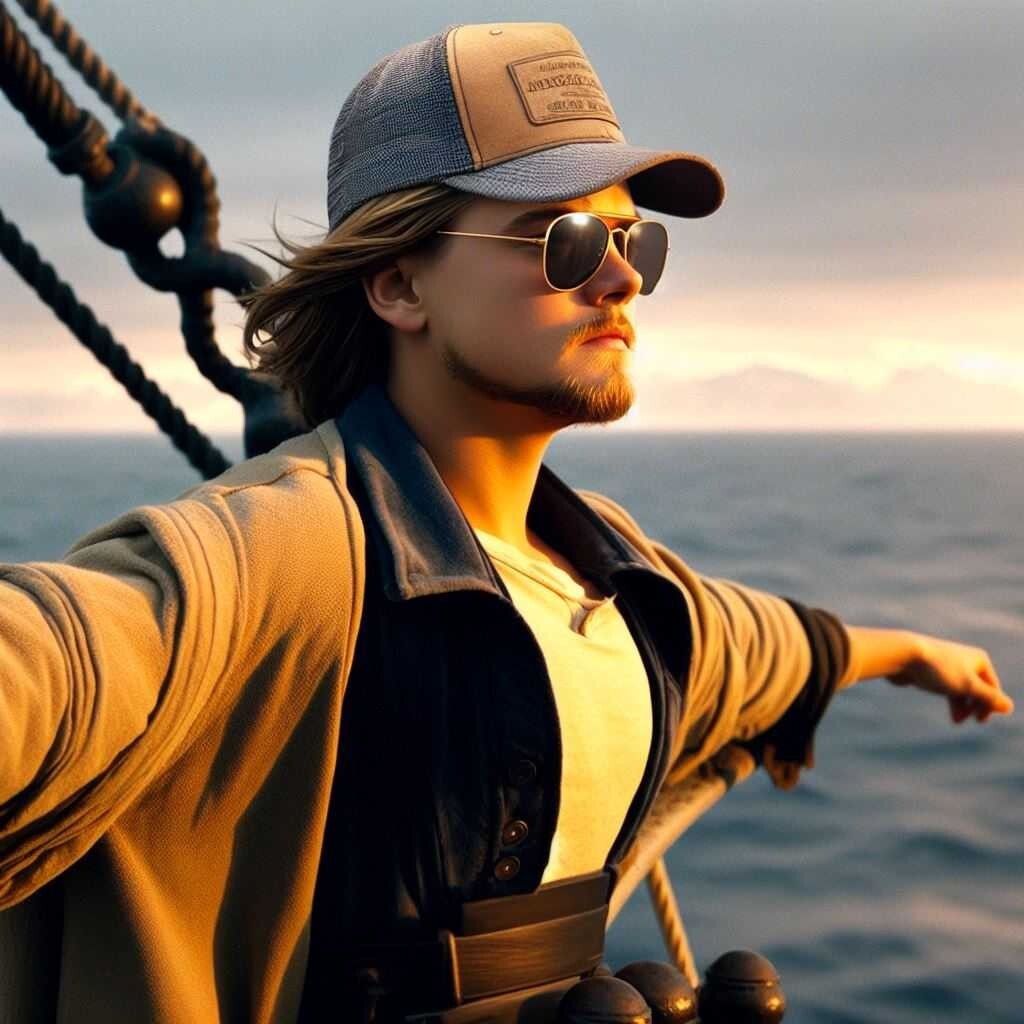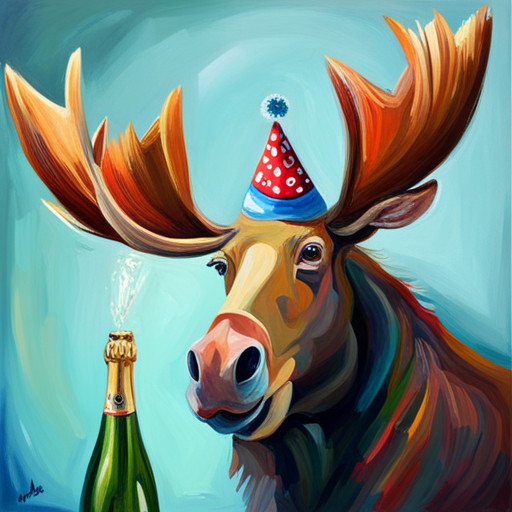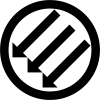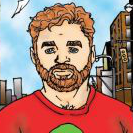When corporations dabble in philosophy, you know they’re trying to muddy the waters and skirt an ethical issue. It’s not a genuine inquiry going on here; it’s a “whatever argument serves the bottom line” situation.
I guess there’s no such thing as intellectual property either, when you really think about it. Hence nothing wrong with me making and selling pirated samsung phones.
Can i copyright my face and get an ai to trawl the internet for any pictures of me and demand people take them down or pay me?
If you’re prominent enough and can afford to pay for the lawyers, you can assert ownership of your own likeness, yes.
That either is necessary is a travesty, though.
Yeah, this is a great example of a true statement that just serves to muddy the water of the actual argument.
A better way to think about it is: an AI-dependent photo is less representative of whatever is in the photo versus a regular photo.
It’s not even a true statement. “A real picture of a pipe” has never once in history been interpreted as “my golly - there’s an actual goddamn pipe trapped inside this piece of paper”. We know it’s a freaking representation.
The “real” part refers to how it’s a product of mechanically capturing the light that was reflected off an actual pipe at some moment in time. You could have a real picture with adjusted colours, at which point it’s real but manipulated. Of course with digital photography it’s more complicated as the camera will try to figure out what the colours should be, but it doesn’t mean the notion of a real picture is suddenly ready for the scrapyard. Monet’s painting is still a painting.
Everyone knows exactly what you mean when you say a real picture. Imposing a 3D model over the moon to make it more detailed, for example, constitutes “not a real picture”. Pretending this is some impossible philosophical dilemma is just a corporate exercise in doublespeak.

This is fuckin’ brilliant. A picture worth a thousand mutilated words.
To play devil’s advocate, even traditional photography involves a lot of subjective/artistic decisions before you get a photo. The type of film used can massively affect the image reproduced, and then once the photos are being developed, there’s a load of choices made there which determine what the photo looks like.
There’s obviously a line where a photo definitely becomes “edited”, but people often believe that an objective photo is something that exists, and I don’t think that’s ever been the case.
Of course - there’s a huge difference between a “real photo” and “objective reality”, and there always has been. In the same way an impressionistic painting might capture reality accurately while not really looking like it that much.
It’s actually way worse. Modern smartphones do a LOT of postprocessing that is basically just AI, and have been for years. Noise reduction, upscaling, auto-HDR and bokeh are all achieved through “AI” and are way further removed from reality than a film print or a DSLR picture. Smartphone sensors aren’t nearly as good as a decent DSLR, they just make up for it with compute power and extremely advanced processing pipelines so we can’t tell the difference at a glance.
Zoom into even a simple picture of a landscape, and you can obviously tell whether it was shot on smartphone. HDR artifacting and weird hallucinogenic blobs in low-light details are telltale signs, and not coincidentally rather similar to telltale sign of AI-generated photorealistic pictures.
Anyway it’s still important to draw a line in the sand for what constitutes a “doctored” picture, but the line isn’t so obviously placed once you realize just how wildly different a “no filter” smartphone pic is from the raw image straight from the sensor.
We are truly in a post-truth era
Lie on your resume.
Photo manipulation has been a thing since photos have been a thing
That’s true, but they didn’t used to sell you a camera claiming it would take a picture when in fact it just invented a picture it thought looked similar to the picture you were trying to take.
“and that’s why cutting and pasting a picture of the moon in the backend of the processing done to your shitty attempt to take a shaky picture of the moon without appreciable amounts of optical zoom to share with absolutely no one that cares is totally fine in a Samsung. You could have been doing that with scissors or MS Paint your whole life”
While that is true, it has gotten incredibly easy to alter and spread such photos. We all love interesting ways to take photos with optical illusions and practical effects.
Just like using a gun. It has gotten very easy to inflict disproportional harm compared to just 50 or 100 years ago.
The only way to stop a bad guy with a camera is a good guy with a camera?
Lie on your resume.
Wait… we weren’t supposed to be doing this for decades already? No one told me.
How can the picture be real if your eyes aren’t real?
The universe is a hologram projected from 19 dimensional space to look like it exists in 4 dimensional spacetime.
Settle down, Jayden
Hands Monopoly money to the clerk at a Samsung store
“I’ll take the S24, money is a made up concept anyway”
Ha ha, very clever… money is just made up. But wait, so are borders, sovereignty, language, art, moral and commercial value, the law, logic, authority, human rights, culture, and government.
According to Jacques Lacan, experience itself is a fabrication; the worst thing that can happen to a person is to come into contact with the real.
The statement that “There is no such thing as a real picture” isn’t wrong. It kind of missed the point though. It’s true that, even when a photo attempts to make the most faithful representation possible, it can only approximate what it sees. The sensors used all have flaws and idiosyncracies and software that processes the images makes different decisions in different situations to give a good image. Trying to draw a line between a “real” picture and a “fake” picture is like trying to define where the beach ends and where the ocean begins. The line can be drawn in many places for many reasons.
That said, the editing that the S24 is going to allow may be going a little far in the direction of “fake” from the sounds of things. I’m not sure if that is good or bad but it does scare me that photos can’t really be relied upon to give an accurate representation of a scene anymore. Everyone having access to ti’s kind of AI is going to make it tremendously difficult to distinguish between realistic and misleading images.
At least sensors will be relatively consistently flawed, while AI can just completely make details up.
It’s not just the sensors though. The software used to convert what the sensors saw into an image makes decisions. Those decisions are sometimes simple and sometimes complex. Sometimes they are the result of machine learning and might already be considered to be AI. This is just another step in the direction of less faithfulness in photos.
Capturing any data or making any measurement is an approximation, because every type of sensor has a limited degree of accuracy - with some more sensitive than others.
I think there is a clear enough line however between making an approximated record of a value, and making a guess at a value, the latter being essentially how these “AI” camera systems work.
I disagree. It’s not that easy to draw a line.
First, current cameras that we consider to not use AI still manipulate images beyond just attempting to approximate the scene. They may not allow easy face swapping but they still don’t faithfully represent the scene much of the time.
Also, I don’t even think it is clear where we can draw a line between “normal” algorithms and “AI” algorithms. What level of machine learning is required before we consider an alrogitm to be AI?
Simple non-AI algorithms and generative AI are on a spectrum of comlexity. They aren’t discrete from one another such that they can be easily categorized.
I think that’s disingenuous…
There’s a clear difference between a processing mistake and an intentional addition. That’s a fairly clear line. Grain on a photo is not the same as making you look like a human head on a shark’s body.
Yes, no photo is 100% accurate, just as no statement will ever capture an incident perfectly. That doesn’t mean there’s no such thing as lying.
There is definitely a line.
Is the tech trying to make the photo more accurate, or change the narrative?
Sure, there’s some tech that’s awkwardly in the middle, like skin smoothing, but we don’t NEED that, and it’s not directly changing the narrative of the story, unless you’re selling acne medication.
I still disagree that there is a clear line. Yes, it is obvious that photo grain is different from making you look like a human head on a shark’s body. The problem is somewhere in the middle. Determining where that line is drawn is going to be difficult and is only going to become more difficult as this technology advances.
I think the line (while the details may be certainly difficult) is along “are you making the existing image/story clearer or are you changing the narrative of the media?
When the story you get from the image changes, then you’ve crossed the line.
I generally agree with you but that is still a fuzzy line to draw that is likely very dependent on circumstances. The devil is in the details.
I can concede to that… there will be some grey area, but the idea that “there is no true photo” or “there is no truth” feels wrong.
Whether or not this feature is on Samsung phones it will still be accessible. It already is really. You can’t hold back the tide.
Yeah, you’re right. It still scares me somewhat, though. What happens when courts fall behind and continue to rely on photo evidence after photo evidence becomes easy for anyone to fake. What happens when the courts finally do realize that photos are unreliable?
I don’t think this change can or should be stopped. It is just worrisome and thought should be put into how to mitigate the problems it will inevitably cause
That’s not how courts work. It’s not like there’s a list of acceptable evidence that gets updated once in a while.
Prosecutors and defenders will present evidence to jurors in their contemporary context.
Basically, we all need to acknowledge that images do not convey “truth”, and really they never did.
Do you think that’s air you’re breathing?
“There was a very nice video by Marques Brownlee last year on the moon picture,” Chomet told us. “Everyone was like, ‘Is it fake? Is it not fake?’ There was a debate around what constitutes a real picture. And actually, there is no such thing as a real picture. As soon as you have sensors to capture something, you reproduce [what you’re seeing], and it doesn’t mean anything. There is no real picture. You can try to define a real picture by saying, ‘I took that picture’, but if you used AI to optimize the zoom, the autofocus, the scene – is it real? Or is it all filters? There is no real picture, full stop.”
If your epistemological resolution for determining the fakeness of the moon landing photos is to just assert that all photos are in a sense fake so case closed, then I feel like you aren’t even wrong about the right thing.
The moon photos they’re talking about are specifically the AI enhanced zoom moon photos of previous Samsung models that caught controversy because taking a picture of a marginally round object against a black background with their zoom enhancement would produce a moon photo even if it was in someone’s dark basement and the object was a dimly lit bottle cap.
To think about it, if a new crater gets ever created on the moon one way or the other these AI models won’t be ever updated and will show the “fake old version” forever.
We should nuke the near side of the moon to catch AI off-guard
I’ve always wondered what it would look like from earth it the moon were nuked
Here is an alternative Piped link(s):
Kurzgesagt - What if we nuke the moon?
Piped is a privacy-respecting open-source alternative frontend to YouTube.
I’m open-source; check me out at GitHub.
Forgot that kurzgesagt has already nuked everything
Kurzgesagt has a video on the subject. Your question is answered at 5:50 - tiny blink of light for few seconds.
if you used AI to optimize the zoom, the autofocus, the scene – is it real?
To me, using AI to optimize zoom, focus, aperture (or fake aperture effects), framing etc. That’s composition. The picture isn’t fake, but software helped compose the real image in a better way.
When you change the image (remove objects, distort parts of the image not the whole, airbrush etc) then the image isn’t based on reality any more.
That’s where I see the line drawn, at least. Yes, drawing a line also makes the image not real any more.
Beyond this, we get to philosophy. In which case, I’ll refer to my other comment on another post about this story. Our brain transforms the image our eyes receive (presumably to be able to relay it around the brain efficiently, who knows?). So we can take it to Matrix philosophy. When we don’t know if what we’re seeing is real, what is real?
There are certainly purposes for which one wants as much of the raw sensor readings as possible. Other than science, evidence for legal proceedings is the only thing that comes to mind, though.
I’m more disturbed by the naive views so many people have of photographic evidence. Can you think of any historical photograph that proves anything?
Really famous in the US: The marines raising the flag over Iwo Jima. It was staged for the cameras, of course. What does it prove?
A more momentous occasion is illustrated by a photograph of Red Army soldiers raising the soviet flag over the Reichstag. The rubble of Berlin in the background gives it more evidentiary value, but it is manipulated. It was not only staged but actually doctored. Smoke was added in the background and an extra watch on a soldier’s arm (evidence of robbery) removed.
Closer to now: As you are aware, anti-American operatives are trying to destroy the constitutional order of the republic. After the last election, they claimed to have video evidence of fraud during ballot counting. On one short snippet of video, one sees a woman talking to some people and then, after they leave, pull a box out from under a table. It’s quite inconspicuous, but these bad actors invented a story around this video snippet, in which a “suitcase” full of fraudulent ballots is taken out of hiding after observers leave.
As psychologists know, people do not think in strictly rational terms. We do not take in facts and draw logical conclusion. Professional manipulators, such as advertisers, know that we tend to think in “narratives”. If a story is compelling, we like to twist neutral snippets of fact into evidence. We see what we believe.
Can you think of any historical photograph that proves anything?
Any photos from war zones.
Tienanmen Square images.
Moon landing.
To name a few that are IMO.
Any photos from war zones.
I gave 2 photos from war zones as examples. What do they prove and how?
The one in Berlin illustrates the inevitable triumph of Communism over capitalist fascism. Obviously.
The fact the scene was reenacted for the photo does not change all that much. There was a time when most people thought that photos never lie, but that hasn’t been for a long time.
The fact the scene was reenacted for the photo does not change all that much.
How do you know that they were reenacted? There are AIs that can produce deepfake texts.
The situations that drive me nuts are the conspiracy idiots who zoom in super hard on some heavily compressed image they pulled off of the web. They then proceed to claim that compression artifacts, optical flares, noise, etc are evidence of whatever crap they are pushing.
Taking things out of context is another issue. It has become painfully common online. I would see it all the time when pushing the “all police are bad!” narrative. They will deliberately edit out the violence that triggered the arrest then make it look like the arrest was unwarranted and overly physical. People will do this with dashcam videos and show road rage but edit out the part where they triggered it with their own aggression.
Ok the one hand, yeah. Actions have consequences. On the other hand, no amount of aggressive driving “deserves” to be responded to in the way some do, and no amount of someone doing something dangerous or illegal justifies police using unnecessary force (or else we wouldn’t call it that). Once they’ve been subdued, it should be done.
Here is an alternative Piped link(s):
Piped is a privacy-respecting open-source alternative frontend to YouTube.
I’m open-source; check me out at GitHub.
I support automatically face swapping everyone’s faces in photos with the gingerbread man from Shrek.
After all, there’s no such thing as a real photo anyway, so Samsung editing them in unusual ways is completely reasonable.
There’s no such thing as a real CEO… they’re just target practice what got up and walked.
Reminds me of jREG’s hyper-self rant
Here is an alternative Piped link(s):
Piped is a privacy-respecting open-source alternative frontend to YouTube.
I’m open-source; check me out at GitHub.
At this rate with this mentality, we are going to have photo “evidence” of bigfoot and UFO’s before 2030.
Early XXI century seems to model late XIX century quite well, if you think about it. A tremendous leap followed by gimping and all kinds of such stuff.
We’ve had photo (and film!) “evidence” of both for many decades. “It has to be real, because they did not have CGI back then” is something that people actually argue.
Here’s a famous Bigfoot film.
Here is an alternative Piped link(s):
Piped is a privacy-respecting open-source alternative frontend to YouTube.
I’m open-source; check me out at GitHub.
I dunno if you’re unaware but UFOs (uaps) are definitely real and there’s tons of photo and video evidence of em.
I should have specified that I mean the x-files type of UFO’s, containing aliens.
They’re still unidentified lol. We have no idea what’s inside them.
There’s a lot of UFOs if you’re bad at birding.
FWIW, The Samsung Boss said:
As soon as you have sensors to capture something, you reproduce [what you’re seeing], and it doesn’t mean anything. There is no real picture.
I understand this as talking about a definitive original, as you get with trad analog photography. With a photographic film, you have a thin coat (a film) of a light sensitive substance on top of a strip of plastic. Taking an analog picture means exposing this substance to light. The film is developed, meaning that the substance is chemically altered to no longer be light sensitive. This gives you a physical object that is, by definition, the original. It is the real picture. Anything that happens afterward is manipulation.
An electronic sensor gives you numbers; 1s and 0s that can be copied at will. These numbers are used to control little lights in a display.
As far as I understand him, he is not being philosophical but literal. There is no (physically) real picture, just data.
I would consider the negatives to be “the original” over the first photo that was printed using them.
I agree. The negatives are the developed film. They were physically present at the scene and were physically altered by the conditions at the scene. Digital photography has nothing quite like it.
Are the raw photos manipulated or are they just the original 1s and 0s unedited?
Not sure if there’s any preprocessing before the processing.
Edit: I’m imagining a digital camera that cryptographicly signs each raw frame before any processing with a timestamp and GPS location. Would be the best you could probably do. Could upload it’s hash to a block chain for proof of existence as well.
Edit: I guess the GPS system would need some sort of ceyptographic handshake with the camera to prove the location was legitimately provided by the satellite as well.
the original 1s and 0s
I think your issue starts there, you already have to decide how to build your sensor:
- If it’s a CMOS sensor how strong do the MOSFETs amplify? That should affect brightness and probably noise.
- How quickly do you vertically shift the data rows? The slower the stronger the rolling shutter effect will be.
- What are the thresholds in your ADC? Affects the brightness curve.
- How do you layout the color filter grid? Will you put in twice as many green sensors compared to blue or red as usual? This should affect the color balance.
- How many pixels will you use in the first place? If there is many each will be more noisy, but spacial resolution should be better.
All of these choices will lead to different original 1s and 0s, even before any post-processing.
Are the raw photos manipulated or are they just the original 1s and 0s unedited?
I think your average camera does not have the option to save RAW files. It seems somewhat common even outside professional equipment, though.
Could upload it’s hash
Yes, exactly. However, this would only prove that the image (and metadata like GPS coordinates) existed at that particular point in time. That would add a lot of credibility to, say, dashcam footage after a collision. It’s curious that misinformation has become a major issue in the public consciousness, at a time when we have far better means of credibly documenting facts, than ever before.
But it would do little to add weight to images from, say, war zones. Knowing that a particular image or video existed at a particular point in time would rarely allow the conclusion if it was real or misinformation. In some cases, one may be able to cross-references with independent, trustworthy sources, like reporters from neutral countries or satellite imagery.
Creating a tamper-proof camera is a fool’s errand. The best you can do is tamper-resistant. That may be enough if the camera can be checked by a trustworthy organization and does not leave its control for long. But in such a scenario you would rarely need that, and it’s not the usual scenario. The price would be very high. Fakes that do pass muster will be given more credibility.
I feel most of this is a slippery slope / negative sum spiral.
See e.g. Liv Boeree’s video on beauty filters.
Here is an alternative Piped link(s):
Piped is a privacy-respecting open-source alternative frontend to YouTube.
I’m open-source; check me out at GitHub.


